This is actually a follow-up to the last paragraph from my previous Debug Log. To save you some reading, I was trying to find which device causes boot delays on my PC. Eventually I traced it to a Bluetooth module, which – to my surprise – was a part of a detachable WiFi+BT module connected to a custom 20-pin header on the motherboard (electrically that was an M.2 key E, i.e. PCI-e x1 + USB). The afore mentioned last paragraph goes like this:
The only question that remains is whether one can attach a GPU through an adapter to this slot (will be pretty slow, especially that it's PCI Express x1 version 2.0 – since it's attached to the chipset and X99 does only PCIe 2.0). Not that there is any reason to do it. Anyway, I might or might not have ordered a proper cursed adapter from a certain Chinese electronics site, so guess we'll find out.
Well, the adapter arrived yesterday, so I took it for a spin. The rest of this blogpost consists mostly of photos.
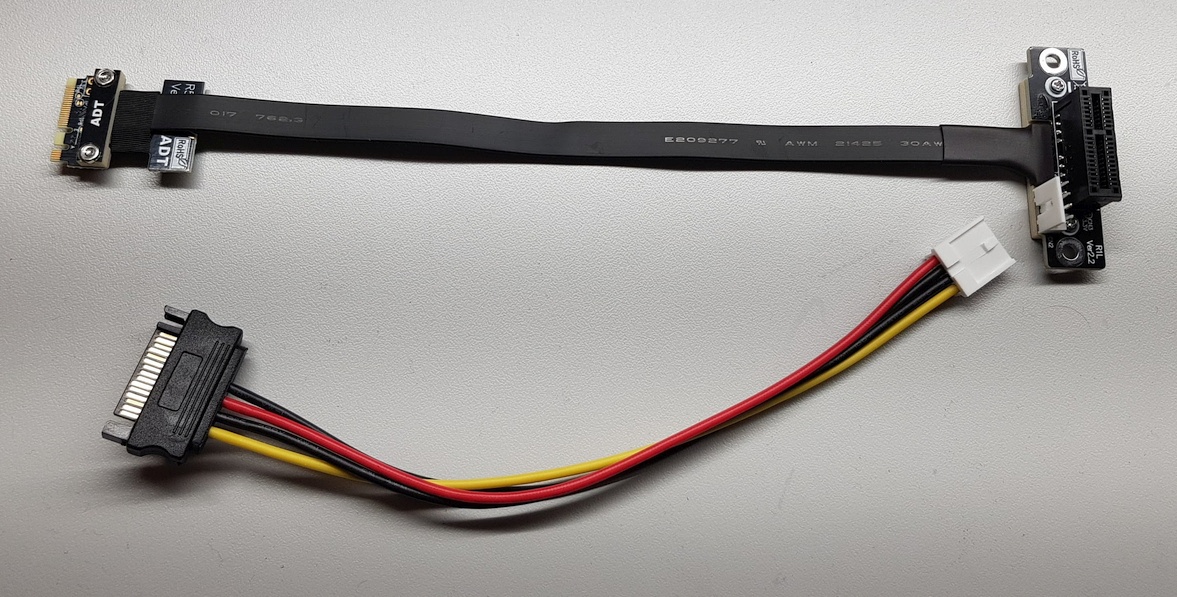
Top: M.2 key E adapter to PCI-e x1 slot, with a 20cm ribbon cable in between
Bottom: SATA power cable used to give PCI-e device some power
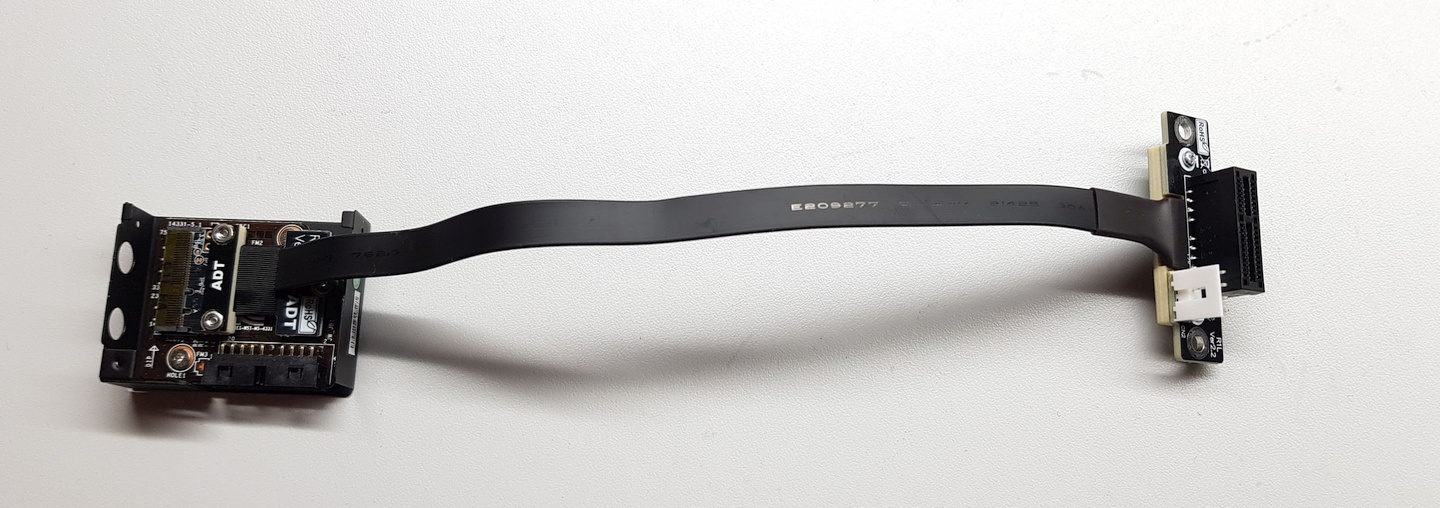
M.2 side of the adapter connected to the M.2–to–20-pin-header adapter that previously housed the WiFi+BT module
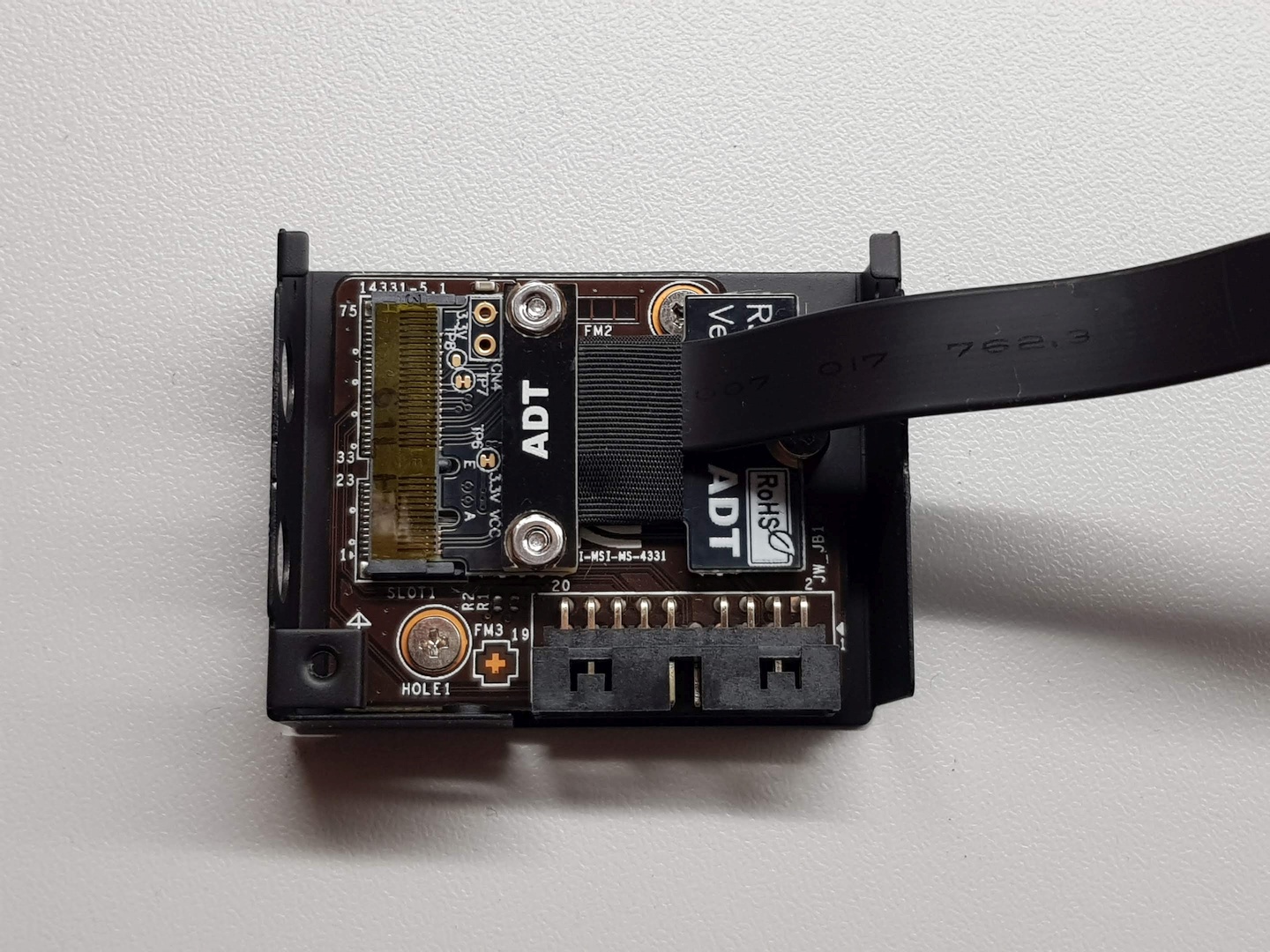
Close up of said adapters. The part of metal housing is there only because the screw keeping the M.2 device in place is screwed into the housing
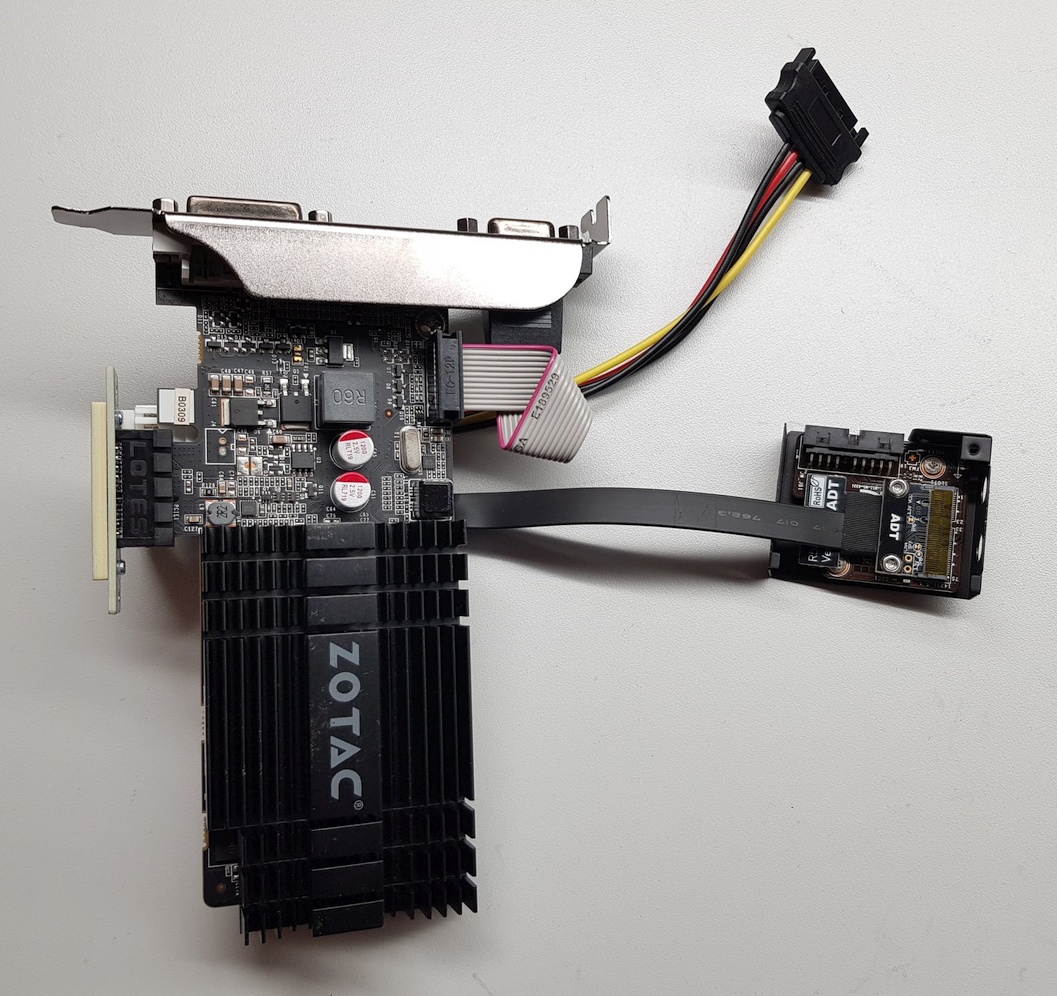
A ZOTAC GeForce GT 710 PCI-e x1 GPU (ZT-71304-20L) connected into the adapter. This is an "as cheap as it gets" card – I keep a bunch of these as a "I need only to enter BIOS please don't occupy too many PCI-e lanes" graphic cards
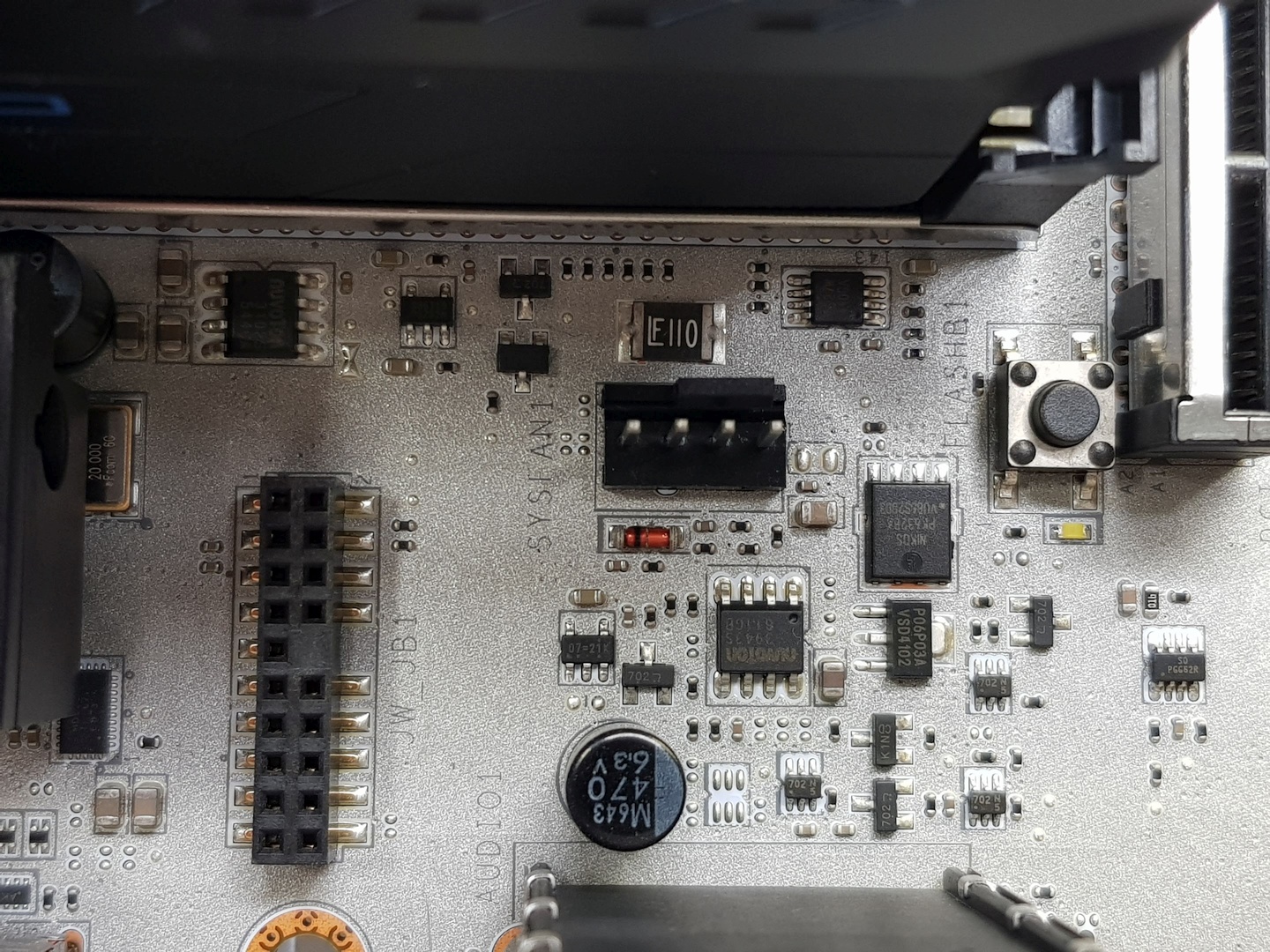
Left side of the image: the 20-pin header socket on the motherboard; technically it's a 19-pin keyed header socket, since one pin holes is filled up
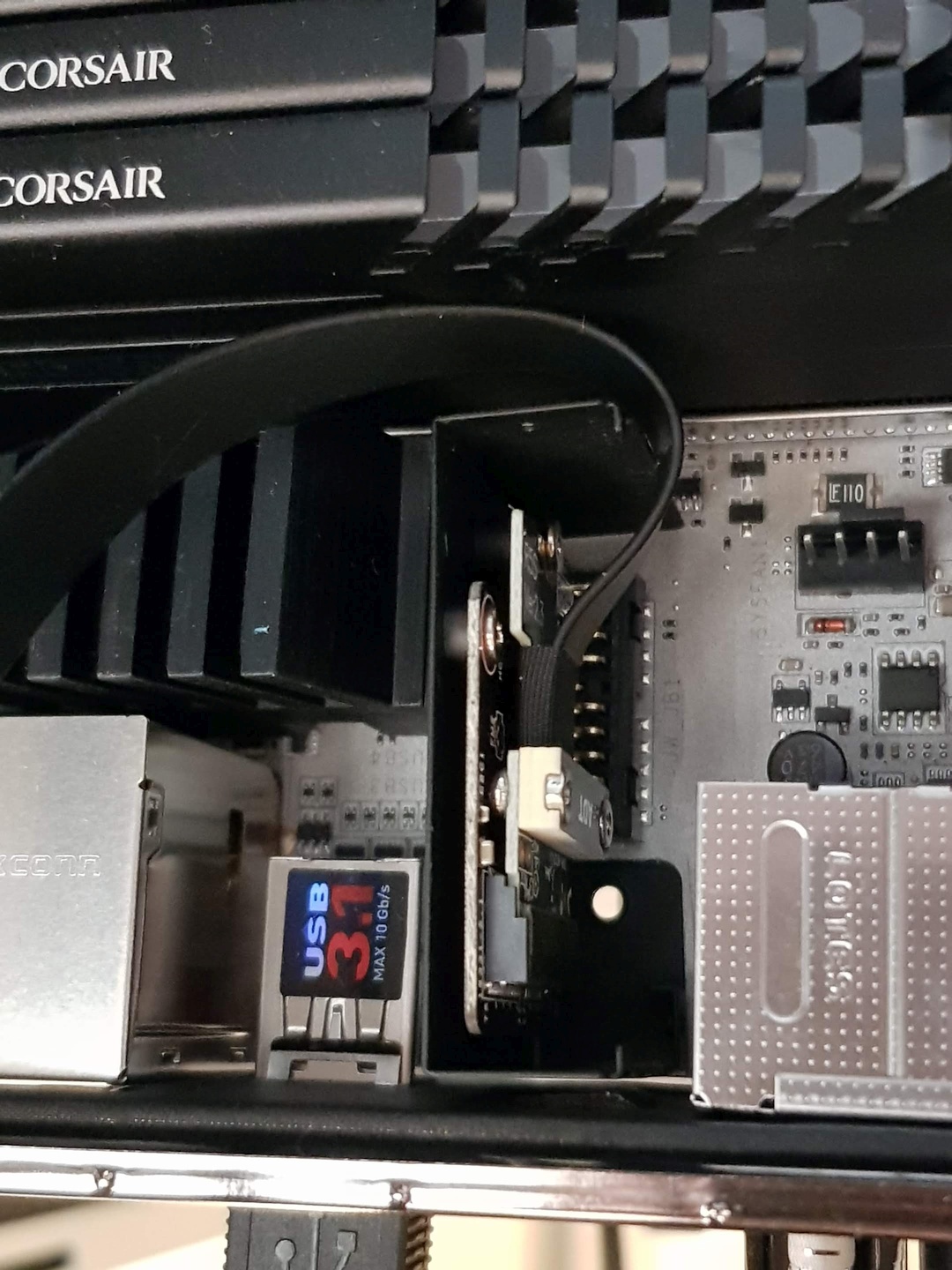
Adapter connected to the header on the motherboard
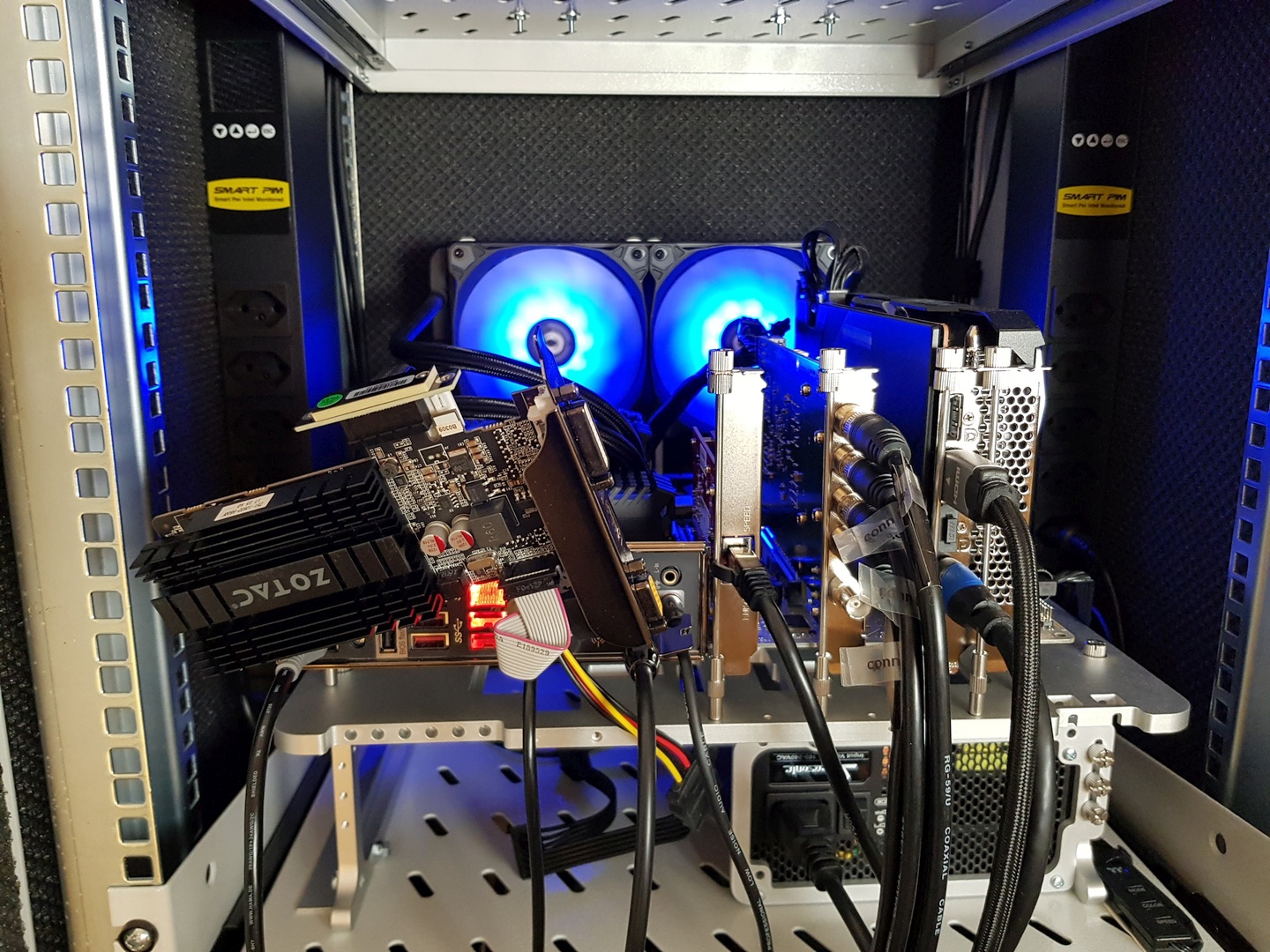
This GPU was light enough I could just literally put it on the USB/TOSLINK cables for it to hang there
After all of this was connected I powered up the PC. To my surprised, it both POSTed and detected the GPU:
23:16:30 root:haven# lspci | grep -i nvidia
0a:00.0 VGA compatible controller: NVIDIA Corporation GK208B [GeForce GT 710] (rev a1)
0a:00.1 Audio device: NVIDIA Corporation GK208 HDMI/DP Audio Controller (rev a1)
The link, as expected, was PCI-e 2.0 x1 (i.e. 5 gigatransfers per second times 1):
0a:00.0 VGA compatible controller: NVIDIA Corporation GK208B [GeForce GT 710] (rev a1) (prog-if 00 [VGA controller])
Subsystem: ZOTAC International (MCO) Ltd. GK208B [GeForce GT 710]
...
LnkSta: Speed 5GT/s (ok), Width x1 (downgraded)
Next came connecting an LCD panel. This also worked without any issues, though the image quality was a bit iffy and it was flickering:
By the way...
If want to improve your binary file and protocol skills, check out the workshop I'll be running between April and June → Mastering Binary Files and Protocols: The Complete Journey
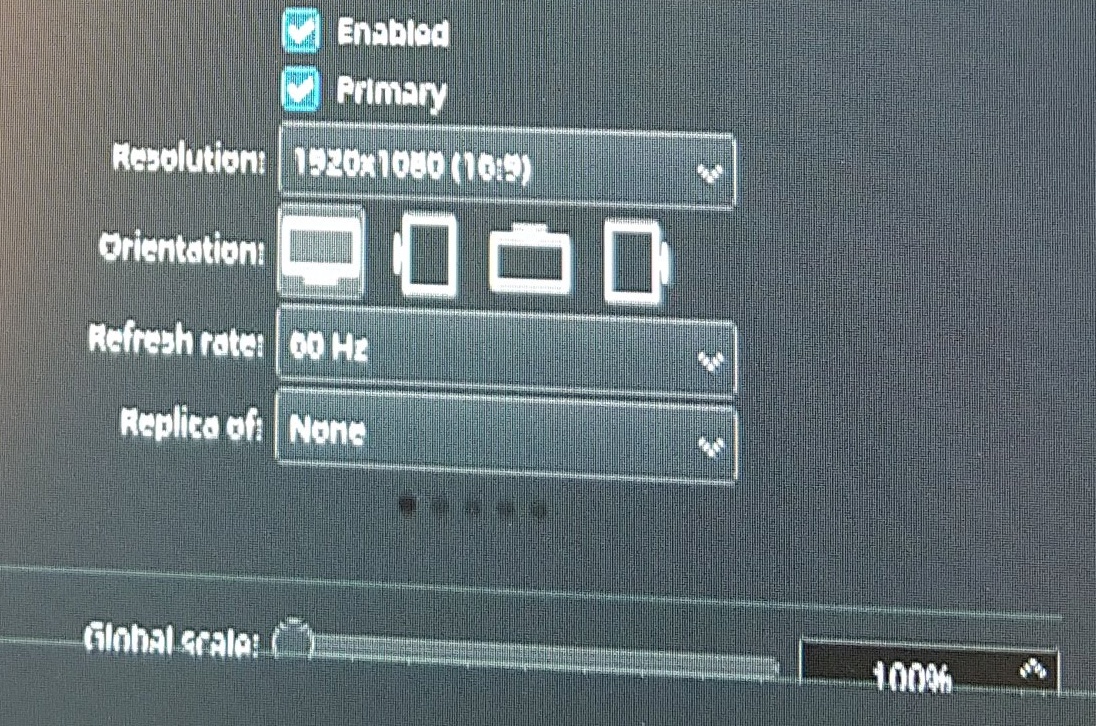
The picture looks like the scan lines were doubled
My best guess is that for some reason this GPU together with my OS decided to output the image using a 1080i (interlaced) format, but my LCD had no idea what to do about with it and just doubled the scan lines, hence the flickering. On a screenshot everything was fine. That said, since all this was just to test if it would actually work, I didn't follow up on this.
Of course I do not plan to use this for anything, but since I am a fan of cursed stuff in computing I had to check if this would actually work. And, somewhat to my surprise, it did. Nice.










Add a comment: